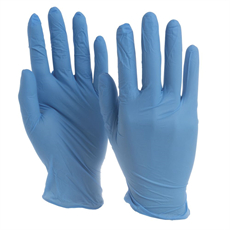The historical development of surgical gowns is an interesting journey that reflects the evolving understanding of infection control, patient safety, and the changing demands of surgical practices over time. Here is a brief look back at the historical development of surgical gowns:
- Early History: In the early days of surgery, which date back thousands of years, surgeons did not wear specialized gowns. Surgical procedures were often performed in non-sterile environments, and the concept of infection control was not well understood. Surgeons typically wore their regular clothing, which could be soiled and unsanitary.
- 19th Century: The mid-19th century marked the beginning of significant advancements in surgical hygiene. Ignaz Semmelweis, a Hungarian physician, introduced the importance of handwashing to reduce the spread of infections in hospitals. Surgeons started wearing white coats or gons to signify cleanliness and to differentiate themselves from other hospital staff.
- Late 19th Century: Joseph Lister, a British surgeon, introduced antiseptic techniques to surgical practice. This included the use of carbolic acid as a disinfectant. Surgical attire, including gowns, began to evolve to include materials and designs that could be sterilized and that helped maintain a sterile field.
- Early 20th Century: The development of aseptic techniques further emphasized the need for sterile surgical attire. Surgeons began wearing gowns made from white cotton or linen, which could be autoclaved for sterilization. These gowns were often heavy and uncomfortable.
- Mid-20th Century: The mid-20th century saw the introduction of disposable surgical gowns made from paper or paper-like materials. These gowns were more convenient and could be discarded after a single use, reducing the risk of cross-contamination.
- Late 20th Century: Advances in textile technology led to the development of disposable surgical gowns made from non-woven materials, such as polypropylene. These gowns provided improved barrier protection against fluids and microbes while maintaining comfort and breathability.
- 21st Century: Surgical gown design and materials continue to evolve. Innovations include gowns with fluid-repellent coatings, antimicrobial properties, and breathable fabrics. Some surgical gowns now incorporate smart textile technology, such as sensors for monitoring vital signs during surgery.
- Environmental Considerations: In recent years, there has been a growing awareness of the environmental impact of disposable gowns. This has led to efforts to develop more sustainable materials and recycling options for surgical gowns.
Throughout this historical development, the primary goals of surgical gowns have remained consistent: to protect both healthcare professionals and patients from infection and to maintain a sterile surgical field. The evolution of surgical gowns reflects the ongoing commitment to improving patient safety and the understanding of the importance of infection control in healthcare settings.





















